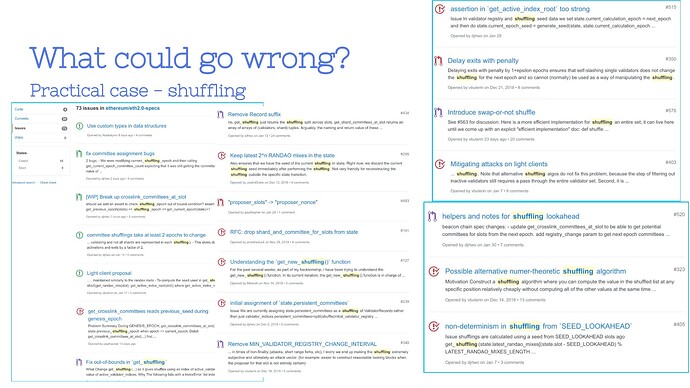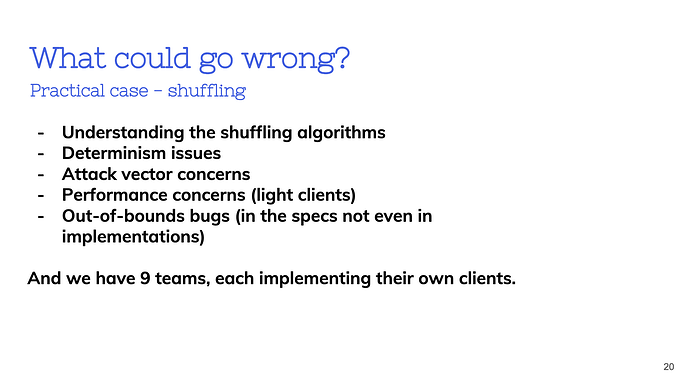This is Part 2 of a blog series exploring the feasibility of implementing a post-quantum signature scheme for Ethereum. In Part 1, we introduced the fundamental challenges and considerations involved in transitioning Ethereum to a quantum-resistant future. In this installment, we’ll dive deeper into Falcon, a promising post-quantum signature algorithm, examining its strengths, weaknesses, and the practical hurdles of integrating it into Ethereum’s transaction framework.
Falcon Signature Scheme - Technical Overview
Falcon (Fast-Fourier Lattice-based Compact Signatures over NTRU) builds upon the lattice-based signature framework of Gentry, Peikert, and Vaikuntanathan (GPV). It applies this framework to NTRU lattices and employs a “fast Fourier sampling” trapdoor sampler. The scheme relies on the Short Integer Solution (SIS) problem over NTRU lattices, which is considered computationally hard to solve in the general case, even with quantum computers, as no efficient solving algorithm is currently known.
Core Components
Falcon is based on the hash-and-sign paradigm and is an evolution of the traditional RSA signature scheme. However, instead of relying on number-theoretic problems, it leverages the hardness of lattice-based problems. Falcon’s security is based on the hardness of finding short vectors in NTRU lattices, leveraging Gaussian sampling techniques for generating trapdoor bases with reduced norms. This ensures efficient key generation and signing.
-
Key Generation:
- Given an NTRU polynomial ring ( \mathbb{Z}[X] / (X^n + 1)), a private key consists of two short polynomials ( f, g ) satisfying the NTRU equation.
- The public key is derived as ( h = g / f ) in the ring ( \mathbb{Z}_q[X] / (X^n + 1) ).
-
Signing Process:
- A message is hashed into a challenge vector in the lattice domain.
- A short solution is sampled using fast Fourier sampling, ensuring a compact signature size while maintaining security against lattice reduction attacks.
- The signature consists of the short lattice vector satisfying the challenge.
-
Verification:
- The verifier checks whether the signature satisfies the public key relation in the lattice ring.
- Verification involves computing norms and ensuring the validity of the lattice basis under modular arithmetic.
Falcon is designed to offer a robust post-quantum signature solution, combining lattice-based cryptography with efficient sampling techniques. While its security benefits are clear, like any cryptographic system, it presents certain trade-offs in terms of complexity and implementation challenges. Now, let’s break down the highlights, potential pitfalls, and some of the more challenging aspects of Falcon.
The Good
Aside from the well-known benefits highlighted by NIST, such as Compact Signatures, Fast Operations (efficient key generation and verification via FFT techniques), and Security Proofs (relying on lattice reductions and worst-case hardness assumptions). Falcon also provides Ethereum-specific advantages. Notably, it has a well-defined worst-case running time, making it particularly useful for the Ethereum Virtual Machine (EVM), where predictable performance and execution times are essential for scalability and reliability.
The Bad
Falcon’s reliance on floating-point arithmetic and specialized number-theoretic transforms (NTT/FFT) can lead to implementation complexity and sensitivity to side-channel vulnerabilities during signing. However, this is NOT a significant concern for Ethereum, as signing occurs off-chain, where performance is less critical. The main focus is on optimizing the verification process, which happens on-chain, ensuring efficient and secure execution.
The Gnarly
There has been ongoing research into efficiently aggregating Falcon signatures, such as the work presented in this paper. Assuming the aggregation will be efficient enough, using Falcon in the consensus layer to replace the BLS signature (instead of the alternative proposal based on Hash-Based Multi-Signatures) would help maintain a more homogeneous stack across the Ethereum network.
Conclusion
Falcon is a strong candidate for post-quantum cryptography applications, including blockchain systems like Ethereum, where signature size and verification efficiency are critical. In Part 3 of the series, we will begin implementing the hybrid approach introduced in Part 1, initially focusing on Account Abstraction and a Solidity contract for Falcon verification, bridging the gap between post-quantum security and Ethereum’s current infrastructure.

